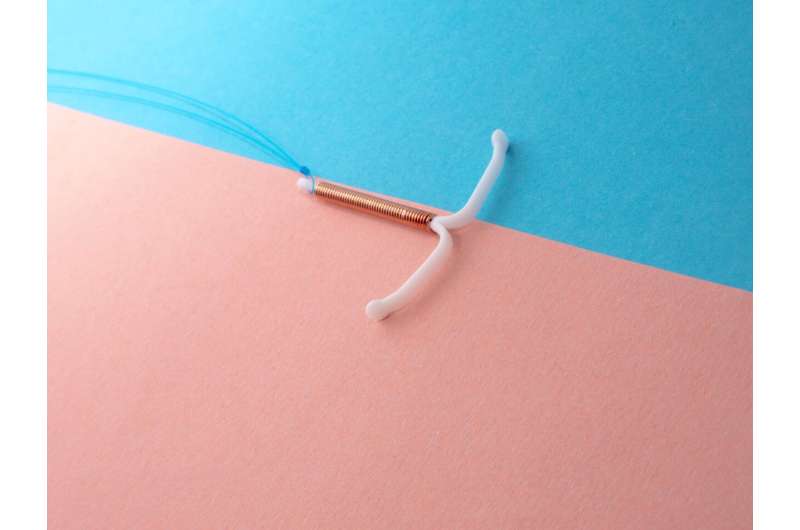This article has been reviewed according to Science X's editorial process and policies. Editors have highlighted the following attributes while ensuring the content's credibility:
fact-checked
trusted source
proofread
Increasing trends of intrauterine device interest and insertion during the COVID-19 pandemic

The research work of four graduating students from Griffith University, Dr. Sarah D'Arcy, Dr. Chester Cao, Dr. Steve Ahn, and Dr. Victoria Allan along with their supervisor Associate Professor Alireza Ahmadvand have been published in Digital Health.
Using Medicare data, the team showed that nationally, the average yearly rates of intrauterine device insertion increased noticeably by 12-18% in 2020-21 when compared to 2018-19, despite multiple, extended lockdowns due to COVID-19 pandemic.
The highest monthly intrauterine device insertion rate was seen in March 2021 (37 per 100,000 population).
Using Google Trends data, the team also found that early on into the pandemic, by June 2020, Googling about intrauterine device-related topics increased dramatically by more than 50%.
More importantly, population level analyses showed that there was a moderately strong and positive correlation between Googling about intrauterine devices and actual intrauterine device insertion rates, with increase in Googling being sometimes a few weeks behind increase in intrauterine device insertion.
The above graduating students presented the preliminary results at the Royal Australian College of General Practitioners—Queensland (RACGP QLD) 62nd Clinical Update Weekend Research Plenary and won the prestigious Medical Student Research Medal Prize. Then, the team published their work in the peer-reviewed, open-access, high-impact Digital Health journal.
The research was focused on understanding the impact of the COVID-19 pandemic and its related lockdowns on the rates of long-acting reversible contraceptive utilization, plus interest in seeking information about long-acting reversible contraceptives.
This required collecting data on Medicare service utilization rates and Google search data, before and during COVID-19 pandemic, to assess for trends and correlation.
The uptake of long-acting reversible contraception continues to grow in Australia and this research demonstrated that Googling about intrauterine devices could, therefore, be a useful indicator to gauge future interest in actual intrauterine device insertion for months thereafter.
The article, "Trends of intrauterine device insertion and 'Googling' about intrauterine devices before and during the COVID-19 pandemic in Australia", by Sarah D'Arcy et al., is published in the Digital Health journal.
More information: Sarah D'Arcy et al, Trends of intrauterine device insertion and 'Googling' about intrauterine devices before and during the COVID-19 pandemic in Australia, DIGITAL HEALTH (2022). DOI: 10.1177/20552076221145799

















